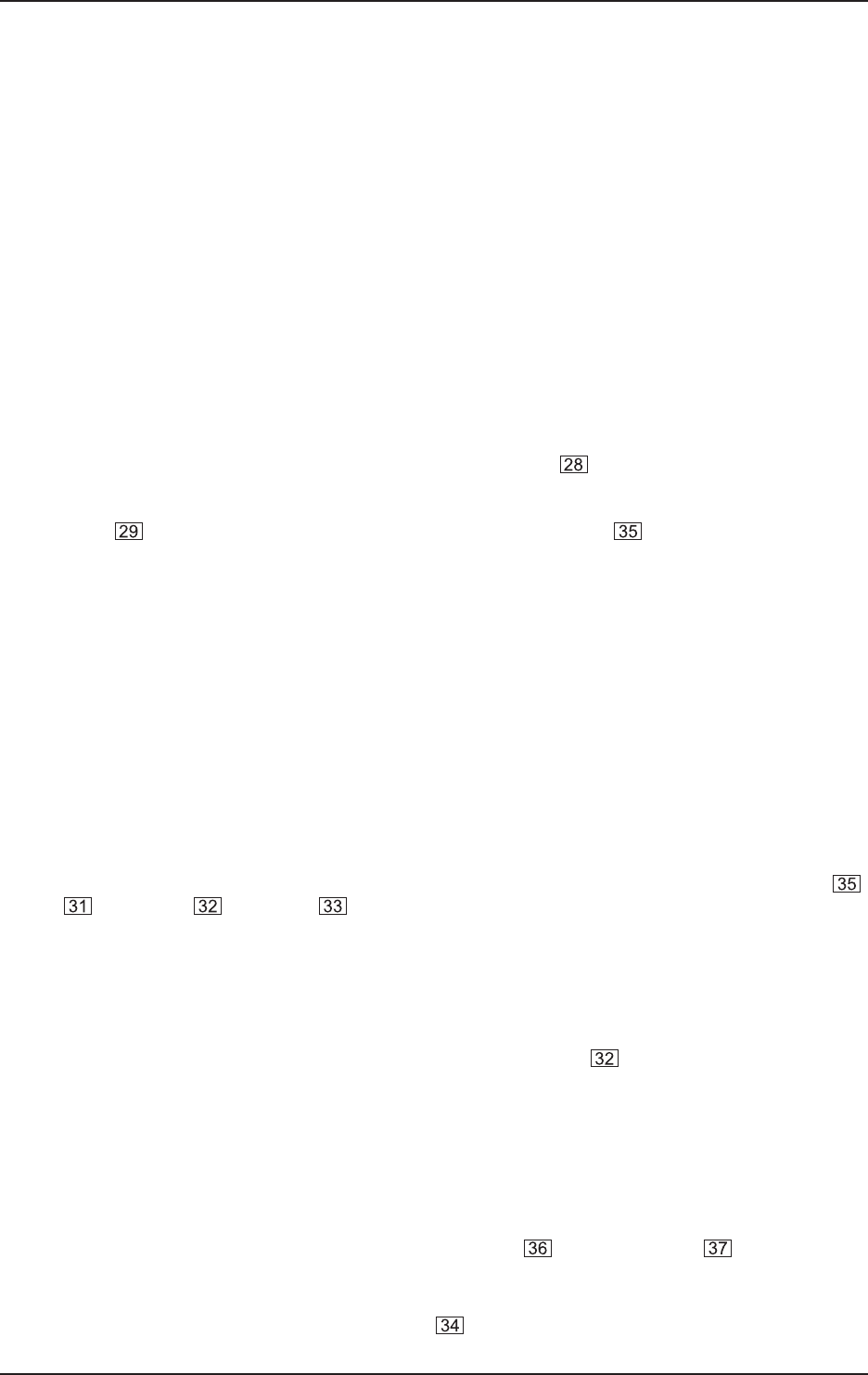
14
EURODESK MX3282A
+ EURODESK insert points are, of course, simultaneously inputs and outputs. For goodness sake,
get them onto a patchbay, where they can appear as independent sockets, and do away with
all these fiddly Y-teads that always seem to be the first to get knotted in the flightcase (see
section 9: PATCHBAY). Now it is possible to do the incredibly useful patch shown in fig. 5.3
without having to make up what would amount to a ring-to-tip, tip-to-ring stereo patch lead.
+ Insert points may also be used as pre-EQ direct outputs without interrupting the signal flow.
See fig. 7.1 Direct out connection.
6. MAIN SECTION
6.1 Aux Masters
Aux sends
Much of the main section (situated left and below the bargraph meters) is taken up by master aux sends and
returns.
Stacked in a vertical column are eight master AUX SEND LEVEL pots , one for each bus. Each has a gain
structure of -oo to +15 dB. The extra 15 dB of gain comes in once a knob passes a center detent (representing
the normal unity gain position), enabling insensitive outboard FX to be properly driven. Each aux send has a
SOLO button , and, as with other areas of the mixer, a local SOLO light , which starts flashing when
any of the aux master sends are solo-ed.
(This is to help you see exactly what has been solo-ed. Any experienced engineer will have had occasion to
painstakingly search through every solo button on his / her console trying to find out why one of the main solo
lights was flashing, while the control room monitors remained silent!)
Aux returns
Across from the aux sends are the stereo aux returns. These can be thought of as eight extra line inputs,
configured as four stereo pairs. On these inputs there is up to 20 dB of gain available. Alternatively, a mono
(center-panned) signal may be returned by plugging into the left aux return jack only.
+ This feature is disabled if all line-level l/Os from the EURODESK are wired permanently to a
patchbay (see section 9: PATCHBAY).
Aux returns 1 & 2
Aux returns 1 and 2 have full group routing matrices to enable returning FX to be sent to tape, plus main mix
bus assignment. The functions for aux return 1 (mirrored by aux return 2) are: routing-switches ,
LEVEL , BALANCE and SOLO . Level controls the amount of signal being blended into the mix or
a group, while balance controls the relative amounts of left and right processed signal. Be sure to have BALANCE
control in center-position, if youre not actually working with it.
+ As always, there are exceptions to the rule above. Some short stereo delay effects (say 30 ms
to left, 50 ms to right) cause a psycho acoustic effect where the earlier delay seems louder. A
similar effect is noticeable when harmonizing in stereo: a slight pitch shift upwards will seem
louder than one that goes down. In both cases use BALANCE to compensate. (An analogy
comes from greece: the columns of the Parthenon in Athens are slightly bowed so as to appear
straight.)
When carrying out the setup mentioned above or any other stereo imaging exercise, dont just rely on the
control room monitors. Get a pair of headphones and listen in stereo and in reverse stereo, to allow for any
hearing discrepancy between your ears.
Aux returns 3 & 4
Aux returns 3 and 4 are the poor relations, with only a LEVEL pot and SOLO switch each. These are
always assigned to the main bus.
Solo
Below the aux returns 1/3 and 2/4 lies a local Solo LED . This flashes whenever a solo button in the column
above is pressed.
6. MAIN SECTION


















